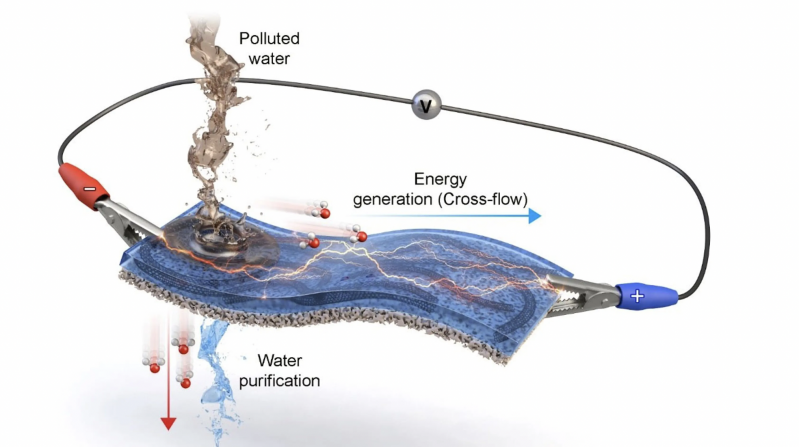Water purification membrane generates electricity as it filters
Published on by Water Network Research, Official research team of The Water Network in Technology
In a highly unexpected approach to renewable energy, researchers in Korea have developed a low-cost, easily-manufactured advanced membrane that actually generates electricity as it turns wastewater, seawater or groundwater into drinking water.

A team from the Korea Institute of Science and Technology (KIST) and Myongji University, both located in Seoul, has published a new paper describing an "electricity generation and purification membrane for water recycling."
The team claims it can reject more than 95% of contaminants smaller than one hundred millionth of a meter in size, including heavy metal particles and the microplastics that are now found in distressing quantities in rainwater from Antarctica to the Tibetan Plateau, rendering it unsafe to drink. It seems to work regardless of the acidity of the water source as well, performing well across a pH range of 1-10.
The membrane is a two-layer sandwich, the top layer being a conductive polymer, and the bottom being a porous filter. As contaminated water is poured onto the top layer, it moves laterally across the membrane, creating a cross-flow of ions that can be harvested as an electrical current using electrodes at either end of the membrane.
While the study claims the membrane showed "high energy generation performance" in experimental testing, the lab prototype is small and so are the corresponding power figures. The study abstract reports a maximum power level of just 16.44 microwatts, and a maximum of 15.16 millijoules of energy generated over an unspecified time period. And the power generation is continuous – just 10 microliters of water was enough to generate electricity for more than three hours.
Taxonomy
- Membranes
- Membrane
- flat Sheet Membrane